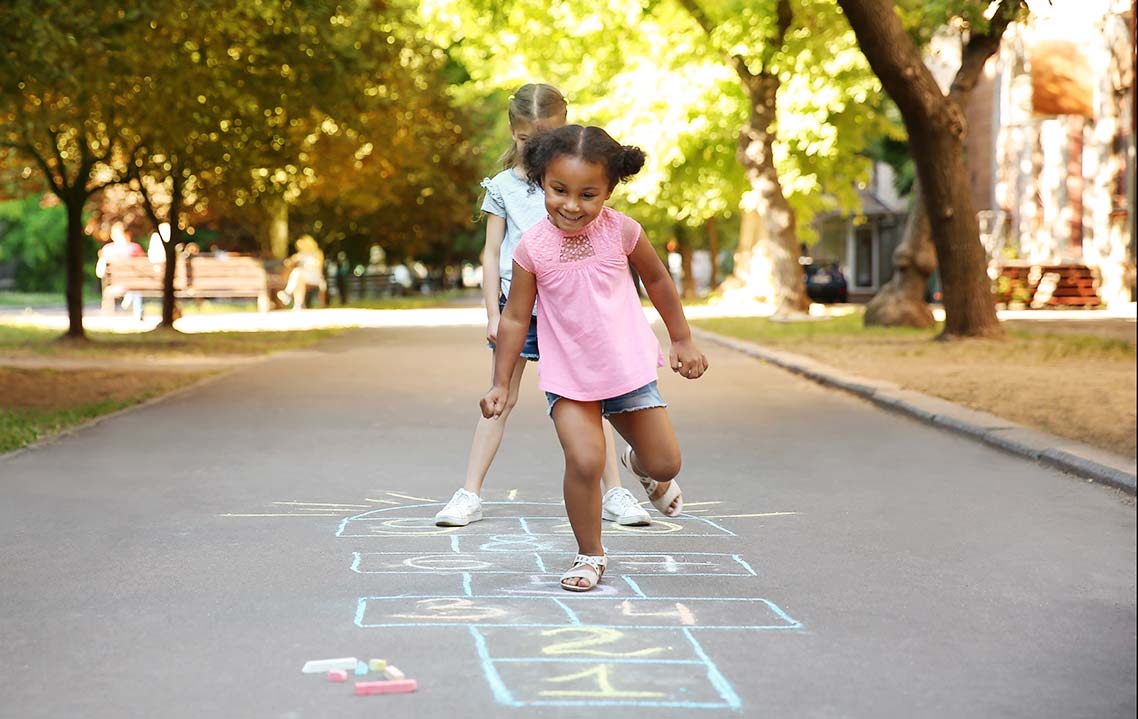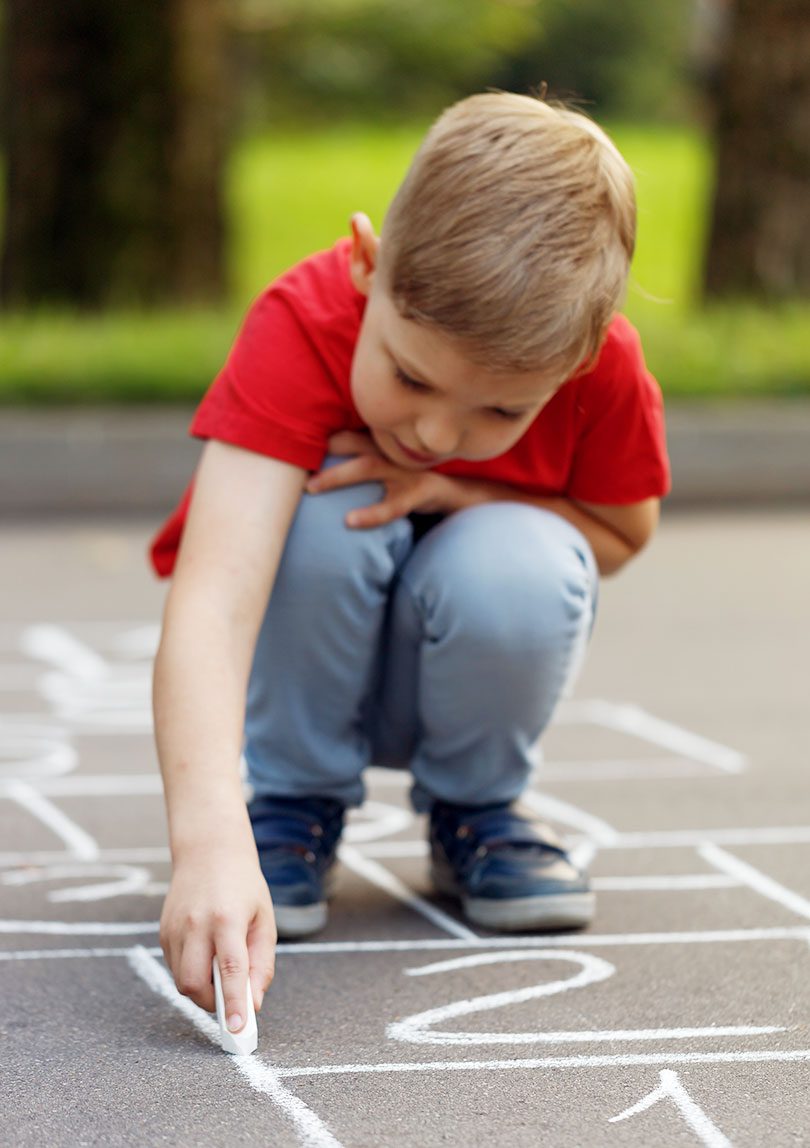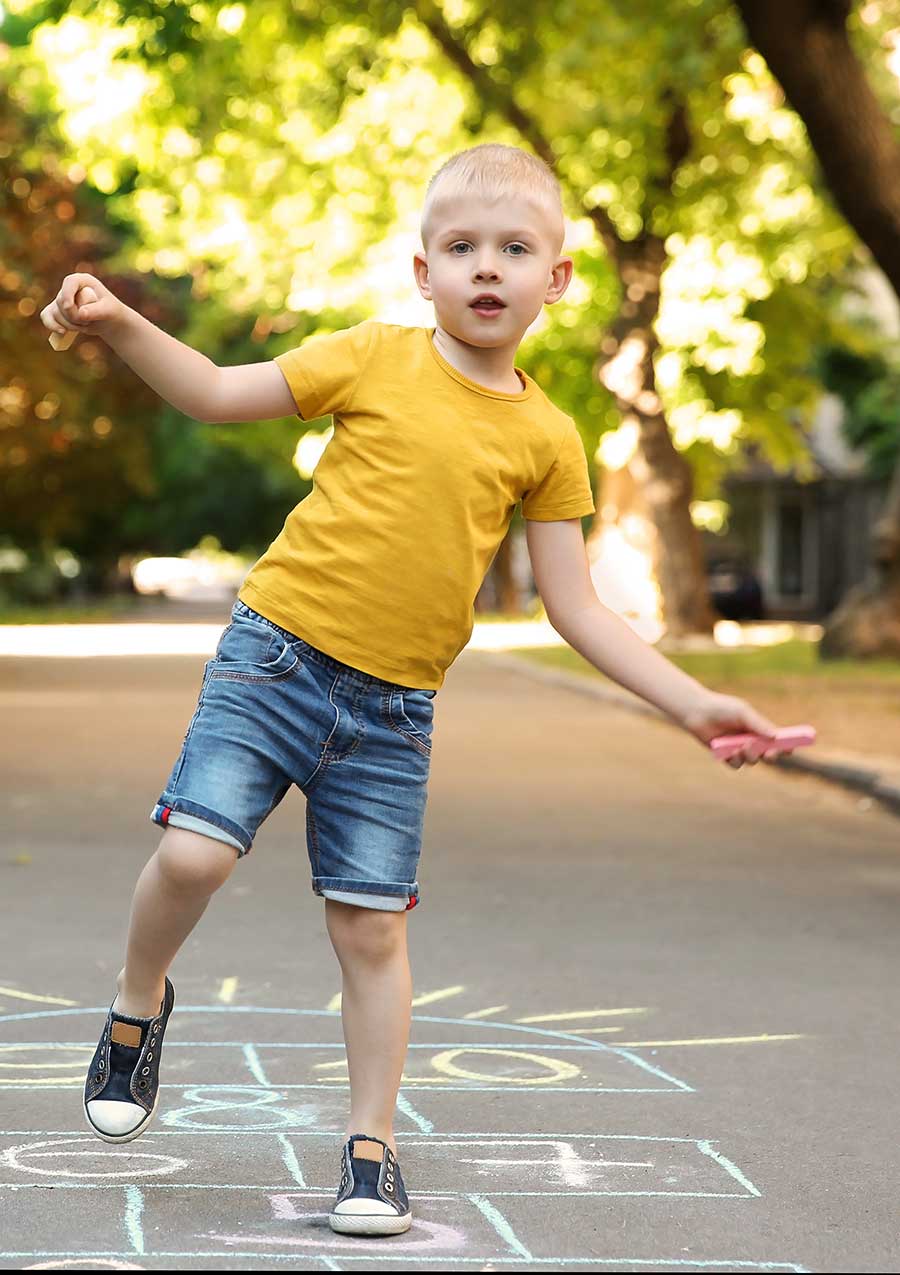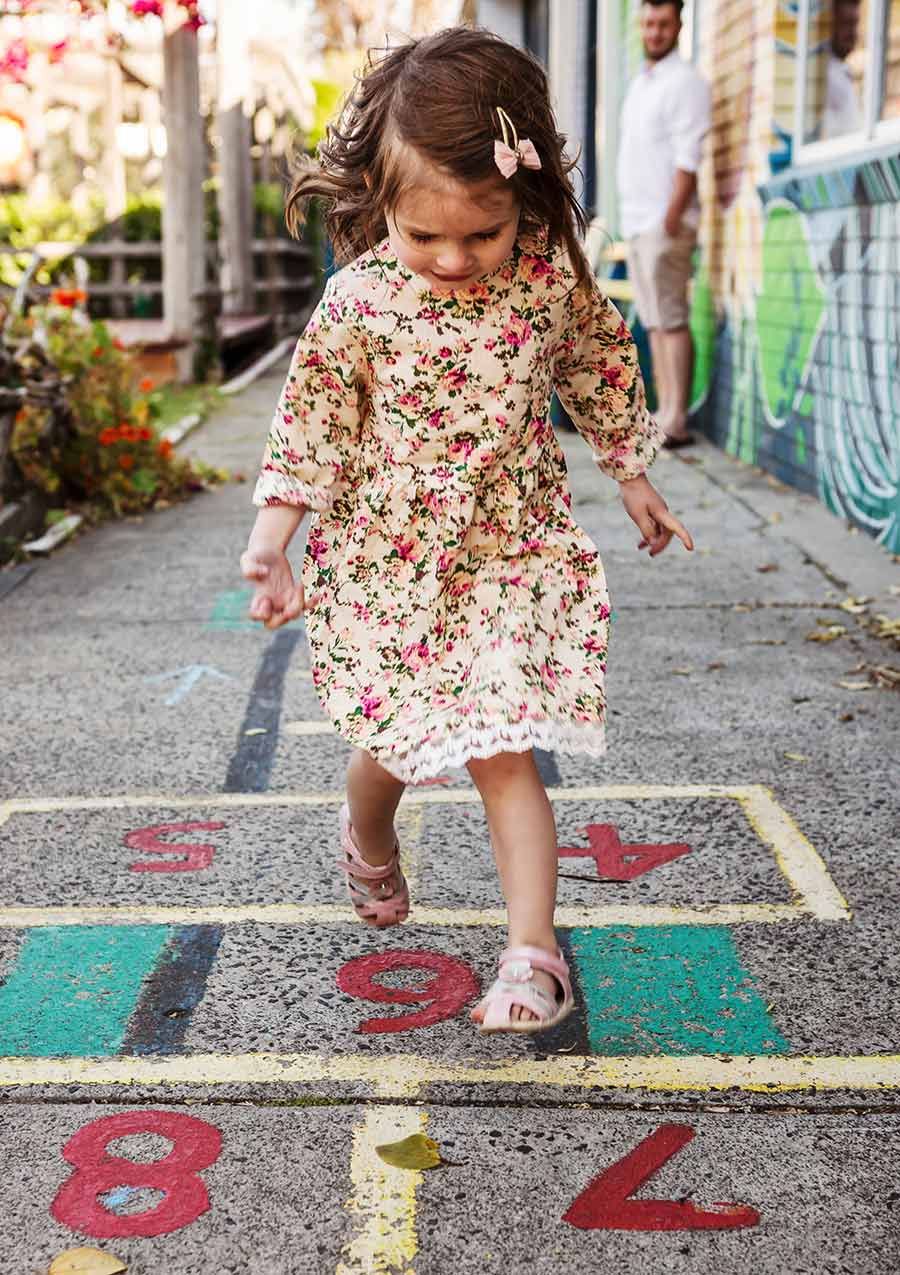Hopscotch Math
Introduction
In this activity, you can boost your child's early math skills during a game of hopscotch.

Gather Materials
- Chalk
Note: Small parts pose a choking hazard and are not appropriate for children age five or under. Be sure to choose lesson materials that you feel are safe for your child and that you are comfortable letting your child use.
Activity
I found this activity at the DREME Network, a great website that focuses on math for early learners.
Did you know that simply having conversations about math will support a child's mathematical learning? As parents, we want to make learning easy and fun—and hopscotch is always fun! So head on over to your favorite hopscotch court or create one of your own with some colorful chalk.
Hopscotch is a game that grows with your child, so you may want to start out by drawing a simple chalk court with only five spaces. Once your child becomes comfortable with this configuration, you can add more.
The hopscotch court at our local schoolyard has a one-foot, two-foot pattern (1-2-1-2-1-2-1). I learned on a 1-1-2-1-2-1-2 hopscotch form.
Check out this Hopscotch Math diagram for some new hopscotch pattern ideas.
At first, encourage your child to jump with both feet into each space to develop this skill before moving on to hopping on one foot and skipping spaces.
We don't actually play the game as much as we just practice jumping, counting and "seeing" the numbers (which helps build number recognition—an important early math skill).
You can work on early math skills in the following ways:
- Count out the numbers as your child jumps on them.
- Ask your child to stand on a specific number. Say: "Can you stand on the number five, since you are five years old?"
- Count backward from 10.
- Ask your child to roll a pebble and say the number it lands on out loud. Or ask your child to try to roll a pebble onto a specific number.
- Use math vocabulary words such as near, far, over, behind, below, inside and outside. These vocabulary words help children talk about where things are located and strengthen their understanding of math concepts as they use the words repeatedly throughout their play.
Physical play like hopscotch enables children to learn mathematical phrases easily and naturally—without worksheets or flash cards.
When children play with and inside of shapes, the learning becomes deeper, more intentional and more relevant.
Because geometric shapes are one of the Common Core learning standards for kindergartners, why not try changing up the shapes a little? Check out the Hopscotch Math diagram to see a hopscotch pattern made with triangles.
Hopscotch will also help your child gain a deeper understanding of spatial relationships (where something is located in relationship to something else)—another skill that will help lay the foundation for later math learning.
Still need a reason to grab your chalk and start hopping? Hopscotch will help boost your child's stamina and physical development.
Have fun hopping your way to early math proficiency!


